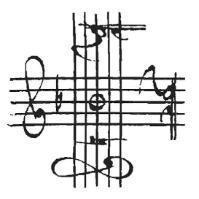Leaderboard
Popular Content
Showing content with the highest reputation on 11/06/2023 in all areas
-
Hi all, I don't come on here as much these days admittedly. I have been very busy with various things and definitely need to engage more with the great community here. Since I last posted, I have jumped on board with Musescore4 - which is absolutely superb in my opinion. I would just like to share my ongoing project for this interested in my music. I have lately been quite taken by the chamber music of George Onslow and August Klughardt, who while adherents of the romantic style drew still on classical norms that I am most familiar with. My intention with this work is to create a sense of character for each instrument and evoke some kind of story being told. The form is standard sonata form for the first and second movements. The third will follow this in a similar fashion. This work will be submitted for a local music competition next year, so it would be great to hear anyone's thoughts should there be an area for improvement - doesn't need to be complex... In return I will look at providing some feedback to other users on here. I hope it is enjoyable at least... PS - Second movement starts at 6:20 minutes https://musescore.com/user/69480886/scores/116379012 points
-
String Quartet about the life cycle of a lily Performed at the 2023 High School Composition Intensive at Boston Conservatory at Berklee by Semiosis Quartet Revisions to come1 point
-
Good afternoon, fellow people of the forum! Today I bring a song I actually made over the past hour and a half. I have titled it "The Dark Lord Dances". In this I really tried to keep things going where normally I incorporate a slower section. While this has that, it doesn't do my typical style of slow down and the song keeps moving forward towards it's conclusion. This was made in FL Studio using BBSCO Discover and Intimate Strings. So, all sounds are free except for some strings as Intimate Strings is one of their paid-for VSTs. Can't wait to hear your thoughts and hope you enjoy the listen!1 point
-
I had originally started this back in the summer of 2022, and I did receive feedback on the 1st movement earlier. Here is the complete 2nd movement and what I have so far of the 3rd. The intention is for the music to be in a late 19th century style, with inspirations by Brahms and Ashton. Full dynamics are included, although sometimes I still believe they shouldn't be strictly followed, and that the performers should have significant choices with regards to dynamics overall. After what happened with the 1st movement I wonder if the 2nd one turned out too simplistic, but maybe the 3rd so far finds the right balance. 2nd movement: 17:03, 5/4 in A Phrygian 3rd movement: 12/16 in F major1 point
-
So... I basically wrote a fugue without any sounds. The subject is made out of rests: https://youtu.be/Djw8LrC99c8?si=QibvkRTYVVJMgCVG The thing is that somehow when I read it I can imagine melodic contours and dynamics in my mind. I feel/hear something abstract inside my head. The thing is. If this has no sound/notes but it can suggest musical sonic ideas. Is it music? And if not, what is it exactly? @Henry Ng Tsz Kiu made me wonder if this could be considered a collaborative composition, because the person who reads the score is the one who fills in the gaps according to their imagination and counterpoint knowledge. To be honest when I was crafting it I had a mindset that I was creating a joke, a prank. But as I was finishing it I realized this interesting cognitive detail and I had to share it with everyone. I hope this was interesting to read!1 point
-
Markus-- I really enjoyed this! You mention Onslow-- I love his chamber music. As Henry mentions, this is more Mozartian/Classical than I would identify with Onslow (certainly mature Onslow). That said, it is a solid piece. A few comments: The intro is almost Baroque in its tone, and seems a real mismatch for what follows. A "custom" opening might serve this piece well. Anticipating my next comment---a more chordal/fanfare/block chord kind of treatment might offset and highlight what follows well by means of contrast--avoiding DBC--"Death by Counterpoint". which brings up... Contrast. One of the reasons I really love the romantic period idiom is the flexibility and expanded expressiveness---while integrating counterpoint, classical phrasing. Your piece stands on its own, but perhaps there is room for more contrast with the counterpoint? WWOD? ("What would Onslow Do?"--its a thing now with the kids...). That said--your counterpoint is wonderful! Bar 40.: missed opportunity with the Bassoon? It just struck me that a moving bassline with 3rds might serve well here and really make this section pop. Anyhow, it is out of character with your writing for the rest of the piece. The piece deserves more of my attention, but these are things that struck me, right or wrong. Overall a great piece of music!! I'm currently flubbing my opportunities for counterpoint in my PQ---I keep saying "In the development! In the development!..." We shall see. Yet again you set a very, very high bar! Thanks for posting!1 point
-
Yeah this is more my personal liking than a necessary requirement for introduction to be related to the main body of the movement. I am just too used to some Beethovaian treatment of the introduction, like his Pathetique Sonata or op.127, and I myself did this before in the 1st mov of my 2nd Clarinet Quintet. I think the treatment of the material is fine, as you do the same in the recapitulation but with a half cadence. I do think the perfect cadence in A major and then a sudden modulation to E major abrupt. I think the narration of the appearence of the flute can still work in B major, as the half cadence of E major and it makes the passage more fluent. Henry1 point
-
Sounds pretty good and thanks for your comment on my composition before 🙂 If I were to give some feedback I think more rythmic varity could maybe improve the piece. Your continuity seems really good which is important but i feel like after some time the rythm becomes too predictable. My guess is to get the listner excited throughout it would add some extra with more varity in the rythm. Maybe a variation on the rythm and more modulation? I think you had a really intersting harmonic language in the piece. Kind regards. Bjarke.1 point
-
1. Well, that’s a good observation. I had composed this slow introduction in advance of the subsequent work and it needed a purpose. In my experience, these introductions don’t necessarily need to be directly related; what’s important is there is dramatic contrast that leads into the tonality of the exposition. If as a listener this succeeds then mission accomplished, though if otherwise do be honest - maybe I can rework this. 2. I intended this bit to be a little tongue in cheek. The flute part enters here in a “what about me?!” Fashion. In fact the motif itself is derived from Handel’s ‘sweet bird’ aria. I agree that it’s unconventional perhaps to commence the second subject in the manner, though the sudden shift in tonality to E major, I feel at least, lends well to narrative of the flute part suddenly taking control of the direction of the music. That is my justification at least! 3. Noted, yes I decided against repeated sections for now. 4. You’re right about this. I have been intending on spicing that section up and the suggestion with some material from my introduction is an interesting one! 5. Noted Thank you for taking the time, Henry. Your comments are very helpful1 point
-
Glad to hear so! And I always used Musescore, it's one of the reasons I started composing. In the case I used Musescore4 and then I edited the score images so it looked creepy.1 point
-
Hi @Markus Boyd, I like the vivacity of the first movement! The interactions between instruments is often great, like places in b.76 and the development section and coda. The music really reminds me more of Mozart's style with the movement of the piece. What is the intention of the tonic minor introduction? The sequence is nice but I feel like it's relatively detached from the whole movement. Are the materials linked or there is a narrative of the piece? For the transition from the 1st subject to the 2nd subject of the exposition I think having the medial caesura in a perfect cadence of the tonic key in b.57 with a fermata makes the music less motoric which doesn't match the overall character of the movement. For me I think reaching the half cadence of E major a more suitable choice here with materials linked with filler material, instead of having a fermata cutting off the sections. B.142 for me is more fluent since it reaches the half cadence of the goal A major, instead of a perfect cadence, even with a fermata. Seeing the repeating sign in b.36 I think the exposition is going to be repeated but actually not. Maybe you can change it with double barline? The section in b.66 I feel like you can add some counterpoint there, re-introducing elements from the introduction. I will change the F natural in b.157 bassoon to a E sharp, and the B# in b.120 oboe to a C natural. My favourite sections of the movement are definitely the development and the coda, as they are very interactive and moving forward there. I will review the 2nd movement later! Thx for sharing! Henry1 point
-
Hi @Bjarke, The piano writing is of course impressive but looks real hard to perform which fits for a Concerto. What do you plan for the structure of the movement? I have already a lot of happenings and modulations within the first subject area itself. I agree with @veps that the beginning looks like a climactic coda throughout. I also think that the themes and motives are not distinctive enough to attract listeners since most of the passages are virtuosic and flourishing. I think you can write a first theme first before having these virtuosic passages for the concerto. The Db major theme near the end is very attactive and it seems like it's the first stablized theme of the movement. Looking forward to your progress! Henry1 point
-
I’m a bit late here to the party! But I just wanted to say I thoroughly have enjoyed your music here. Your approach to composition couldn’t be more different than my own, and yet it has fascinated me and I feel I have much to learn. I love the juxtaposition between the orient and western classical tradition. I haven’t been able to listen to all in this single sitting, though I’ll be sure to listen to it all one evening this week. thank you very much.1 point
-
Hi! I know this is way past when you originally posted this...but I just wanted to say that this is AMAZING. Could absolutely hear this accompanying a scene on the big screen. That intro had me hooked from the start! And I highly agree with what a previous commenter said that something about that intro feels very John Williams. As this song plays I can vividly make scenes to match it.1 point
-
I like the expressive writing for the solo string part, although I feel that the harmony is somewhat monotonous (you do not really deviate from G minor at all). It would be nice if maybe you transitioned, even if short lived, towards a major mode as a respite from the dire tone that is otherwise set. Think of your listener's experience when writing. That should open much needed avenues for your music.1 point
-
There are a couple of things I would like to say before I comment on the material. 1. The score is a little intimidating, given the bars a quite condensed on each page. It would be better to have a copy of the score that is more easily navigable. 2. The sound sets I don't think do the work much justice. I don't know what software you use, but I would recommend Musescore4, which is free to use and has much better sound files. Of the music, I have to be honest that I don't warm to the opening material of either movements. They are quite monotonous, without much rhythmic or harmonic variety. I appreciate the first movement, especially, is 17 minutes long. But it is important to gauge the listener early on to encourage one to listen further. I don't mean to be harsh, as I know how much work goes into these things and are often deeply personal to our individual effort. However we should remind ourselves to think of the listener and critic first and foremost, if it is our intention to share our art to the world. Thank you for sharing.1 point
-
I am very impressed with this work. I have not yet dared write for such a large scale orchestra, thus I have little experience with orchestration to offer. But at the very least, I can say I have thoroughly enjoyed the orchestration on show here, which I believe is a testament to your skill as a composer. I would like to hear more about your influences for this work, as well as the story you intend to depict here - I gather it is programmatic. With my relatively frugal experience at writing symphonic music on such scale, I feel perhaps that the criticism that I can offer is only limited really to my own personal taste and listening experiences. Of that, I can say that I do enjoy music in general that offers memorable musical ideas (which are often repeated to an extent) with a largely circular structure (sonata form). Beethoven's Eroica or 5th symphony are good examples of this - they contain highly memorable ideas that have earned their place in the canon. With your work, I feel the narrative does to an extent wonders off in a linear fashion without a lot of obvious repetition of previous material. Perhaps I should listen to the work for a second time should I be mistaken. I did particularly enjoy the soloist sections, the antiphony between the various instruments and the emotional variety that ultimately builds towards such a superb dramatic finish. Thanks for sharing, I can really see how much effort you have put into this. It has been a pleasure. I believe you have a gift to offer.1 point
-
Hello! Earlier this year I had the pleasure of organizing, hosting and judging the "From Bits to Bangers" Instrumental Music Composition Competition, and now I've finally had time to write a piece using the requirements of the contest as inspiration! I've chosen an 8-bit track that nobody else used - Harvest Moon - "Mountains" which I've also attached here for your listening pleasure. I didn't write this in my regular method, by first finishing everything on paper before even allowing myself to input anything into the computer. I think the very repetitive nature of the original track was a challenge for me to make something interesting out of and I coped with that by entering the music piecemeal into Musescore. Let me know if you like the result or not. I welcome your constructive critiques, suggestions and observations! Thanks for listening.1 point






.thumb.png.8b5b433a341551e913a34392660bc95b.png)